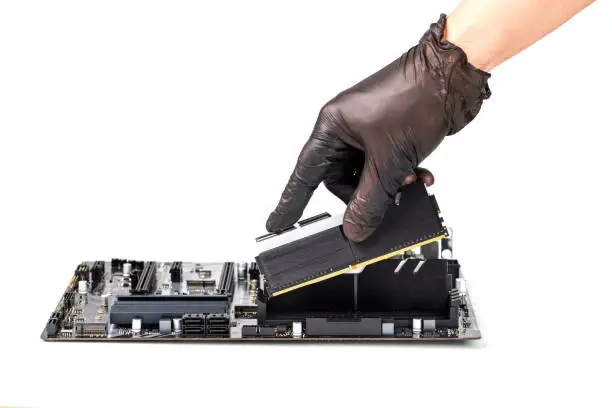Safe Mode on a game console is meant to be a helpful troubleshooting feature—but when your console gets stuck in it, frustration builds fast. Whether you’re in the middle of an intense campaign or just trying to unwind after a long day, a console that won’t exit Safe Mode can feel like the end of the world. But don’t worry! You’re not alone, and most importantly, this issue is fixable.
In this article, we’ll explore what Safe Mode is, why your console might be stuck in it, and step-by-step solutions to get you back into the game. From basic fixes to advanced troubleshooting, we’ll walk you through everything you need to know. So, grab your controller—this is your ultimate guide to recovering your console from Safe Mode purgatory.
Understanding Safe Mode: What It Is and Why It Happens
Safe Mode is a built-in function on most modern consoles like the PlayStation 4, PlayStation 5, Xbox Series X/S, and even some Nintendo devices. It allows you to boot up your console with only essential system software running. This mode is designed to help troubleshoot software-related issues like corrupted files, failed updates, or faulty hard drives.
But when Safe Mode turns from a helpful feature into a constant roadblock, it often signals a deeper issue—one that needs your attention.
Common triggers for Safe Mode include:
- Interrupted or failed system updates
- Corrupt system files or game data
- Faulty or improperly installed hard drives
- Power outages during bootup
- Controller or USB accessory issues
- Damaged firmware or hardware glitches
Let’s explore how to fix it.
Step 1: Check Your HDMI and Power Connections
Before diving into software-level fixes, rule out any basic hardware problems. Loose HDMI cables, faulty power cords, or malfunctioning power outlets can sometimes cause your console to reboot incorrectly, pushing it into Safe Mode.
Do this:
- Unplug all cables.
- Check for dust or debris in the ports.
- Try a different HDMI cable.
- Plug the console directly into a wall outlet (avoid power strips or surge protectors).
Reconnect everything and power it on. If the console boots normally—great! You’ve fixed it. If not, keep reading.
Step 2: Restart System Using Safe Mode Options
If you’re already in Safe Mode and facing the options menu, the first thing to try is a simple system restart. This is usually option 1 in the Safe Mode menu (on PlayStation, for instance).
Steps:
- Select “Restart System.”
- Let the console power down and boot up again.
This might help clear minor glitches or memory errors.
If it restarts normally, congrats! If it boots back into Safe Mode, we’ll need to dig deeper.
Step 3: Rebuild the Database
One of the most powerful tools in Safe Mode is the “Rebuild Database” option. It scans the hard drive for errors and rebuilds the file system. It doesn’t delete any of your games or save files, so it’s safe to use.
Steps:
- Power off the console completely.
- Boot into Safe Mode by holding the power button for 7–10 seconds until you hear two beeps.
- Select “Rebuild Database” (usually option 5 on PlayStation).
- Wait patiently—it may take 10–30 minutes.
This often resolves issues caused by corrupted data.
Step 4: Update System Software
Outdated or corrupted firmware is a common reason your console might stay stuck in Safe Mode. Updating the system software can resolve those issues.
There are two ways to update:
A. Through Internet (If Available)
If your console can still connect to the internet in Safe Mode:
- Select “Update System Software”
- Choose “Update Using Internet”
Let it download and install the latest firmware.
B. Using a USB Drive
If internet isn’t working:
- Download the latest system software from the console’s official website.
- Save it on a USB drive in a folder named “PS4/UPDATE” or “PS5/UPDATE”.
- Insert the USB into your console and boot into Safe Mode.
- Select “Update from USB Storage Device.”
Let the update complete and see if it boots normally.
Step 5: Disconnect All External Devices
Sometimes, third-party devices like controllers, external hard drives, or headsets can interfere with the console’s startup.
Unplug all non-essential devices including:
- USB hard drives
- Charging cables
- VR headsets
- Controller docks
Then reboot. If the console starts normally, one of those devices was the culprit. You can plug them back in one-by-one to identify the faulty one.
Step 6: Initialize Console (Last Resort)
If nothing works, you may need to initialize your console. This step will erase all data and return the system to factory settings, so back up your data first if possible.
To do this:
- In Safe Mode, choose “Initialize PS4” or “Initialize PS5”.
- Follow on-screen prompts.
After resetting, your console will be like new—hopefully without the Safe Mode issue.
If you’re not confident doing this yourself, you might consider a professional repair service—especially if your console is still under warranty.
Step 7: Check for Hard Drive Issues
On consoles with replaceable or upgradable hard drives (like the PlayStation 4), a faulty or improperly installed hard drive can trigger Safe Mode.
Steps:
- Power off the console.
- Open the hard drive bay (follow your console’s user guide).
- Make sure the hard drive is seated properly.
- If needed, replace it with a working drive and reinstall system software using a USB.
If your hard drive is corrupted, your console may not boot until it’s replaced or reformatted.
Step 8: Fix Power Supply or Surge Problems
Safe Mode loops can also be caused by irregular power supply or voltage fluctuations. If your home experiences frequent brownouts or surges, consider using a UPS (Uninterruptible Power Supply). It regulates voltage and protects your console from damage during outages.
A sudden loss of power mid-update or mid-game is one of the quickest ways to corrupt system files, so stabilizing your power source can help prevent future Safe Mode loops.
Step 9: Look Out for Faulty Firmware Updates
Sometimes a buggy firmware update can cause your console to crash into Safe Mode. If you recently updated your console and immediately started seeing this issue, it may not be your fault.
In such cases:
- Keep an eye on forums and social media. You’re probably not alone.
- Console manufacturers often push hotfixes quickly.
- Boot into Safe Mode periodically and try “Update System Software” again after a day or two.
Step 10: Contact a Local Repair Professional
If you’ve tried everything and your console is still stuck in Safe Mode, it might be time to get expert help.
For example, if you’re located in California and looking for reliable support, you should consider a trusted Game Console Repair service in Pomona, CA.
Professional services can run diagnostics, replace internal components, or flash new firmware—something that’s not possible at home.
Look for repair shops with solid reviews, warranty options, and console-specific expertise.
Preventing Safe Mode in the Future
Getting out of Safe Mode is just one part of the journey. You also want to avoid going back there again. Here’s how to reduce the risk:
- Keep your firmware updated regularly.
- Turn off your console properly—never unplug it while running.
- Use surge protectors or a UPS to avoid voltage spikes.
- Avoid sketchy external accessories that might cause boot errors.
- Maintain proper ventilation to prevent overheating.
And most importantly—back up your data often!
How to Know When It’s Time to Replace Your Console
Sometimes, Safe Mode issues are a sign of bigger problems: aging hardware, persistent overheating, or deep firmware corruption. If your console is several years old and keeps getting stuck, you might consider:
- Upgrading to the latest generation
- Selling your current console for parts
- Using a trade-in program for discounts
Before replacing it, always try professional diagnostics. A $50 repair might save you from buying a whole new console.
Frequently Asked Questions (FAQs)
Q1: Can Safe Mode damage my console?
No, Safe Mode is a diagnostic feature. It doesn’t harm your console. However, leaving it stuck in this mode for too long without fixing the issue can make it harder to diagnose.
Q2: Does rebuilding the database delete my saved games?
Nope! Rebuilding the database only reorganizes system files. Your save data, game installs, and screenshots remain safe.
Q3: Why does my console keep going into Safe Mode after every reboot?
This could be a sign of deeper software corruption, a failing hard drive, or an accessory conflict. Follow steps 4–7 in this guide and seek professional repair if the issue persists.
Q4: Can I fix a Safe Mode loop without a USB drive?
In some cases, yes—especially if your console can still access the internet in Safe Mode. But for firmware recovery or full reinitialization, a USB is usually necessary.
Final Thoughts
A console stuck in Safe Mode isn’t the end of your gaming world—it’s just a bump in the road. Whether it’s a PlayStation, Xbox, or any other system, the key is staying calm and trying these solutions one by one. Most issues are fixable without sending the device in for repair.
But if you’ve tried everything and still can’t get back to regular gameplay, don’t hesitate to reach out to your local tech experts. They’ve seen it all and can often solve the problem faster than you think.
Welcome to Techy Pomona, your reliable solution for all game console repair needs. If you’re experiencing trouble with your PlayStation, Xbox, or any other gaming console, we are here to help. Whether you need PlayStation repair services in Pomona or Xbox repair services, Techy Pomona is your best choice, offering unparalleled PlayStation and Xbox repair services right here in Pomona, CA.


